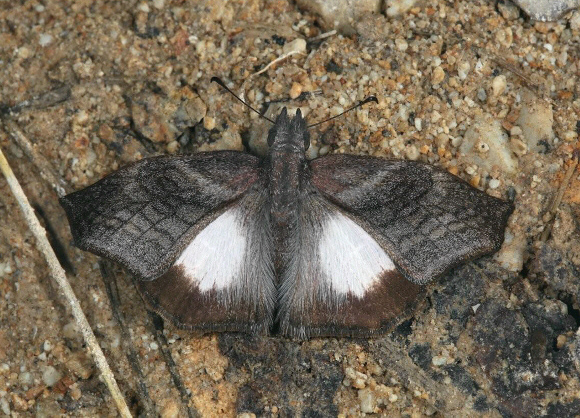
Introduction
The subfamily Pyrginae are characterised by their habit of basking with wings outspread, compared to the half-open position favoured by the Hesperiinae.
Theagenes are among the most distinctive skippers in the Americas, easily recognised by the large pure white circular patches on their hindwings, and the cryptic forewings. When the butterflies are basking they adopt a characteristic posture with the apex angled downwards.
There are 2 other species in the genus: albiplaga, an almost identical species from the Andes; and dichrous, which lacks the white patches and occurs in Argentina and southern Brazil.
Theagenes aegides is found from Mexico to Panama.
Habitats
This species occurs in disturbed, open habitats including roadsides and agricultural land, at altitudes between about 1500-2000m.
Lifecycle
The lifecycle appears to be unrecorded. Generally, Pyrgine butterflies lay their eggs singly on either the upperside or underside of leaves. The caterpillars are typically dull green or brownish, with thin longitudinal lines along the back and sides, and with black shiny heads. They feed on low growing herbaceous plants, although a small percentage feed on the leaves of bushes or trees. The pupae are usually dark and smooth, with the wing cases in a contrasting tone or colour. They are normally formed within silken tents formed by spinning together the leaves of the foodplant.
Adult behaviour
The butterfly is usually encountered singly, or occasionally in two’s or three’s, and is only active in hot sunshine.
Males fly very rapidly, circling and zig-zagging in a very erratic fashion just above the surface of the ground. They periodically settle to imbibe moisture from damp sand, with wings outspread, but after a moment or two the forewings are drawn partially over the hindwings to conceal the white patches. This is presumably a case of flash-colouration, whereby an avian predator chasing after a butterfly with conspicuous white patches is suddenly left confused as the butterfly effectively disappears after covering the hindwings.
